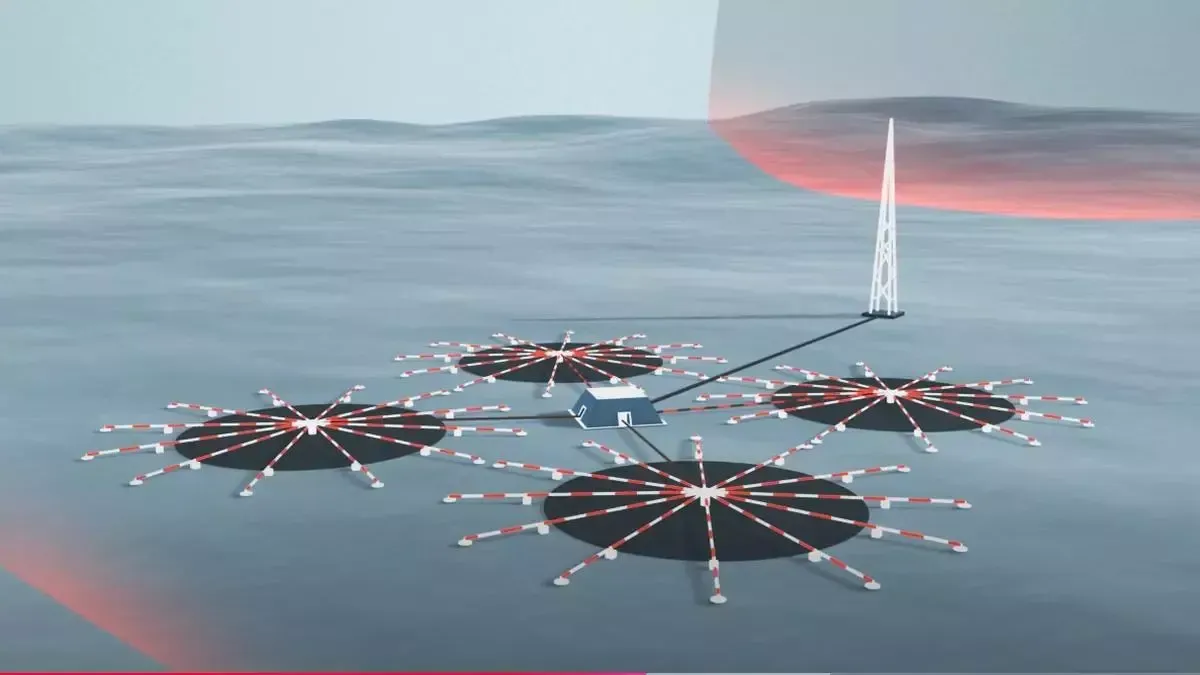About Infrasound:
- It refers to sound waves with very low frequencies, in contrast to the more ubiquitous ultrasound.
- It can be produced by a passing meteor, a storm, an aurora up north, volcanoes, earthquakes or even nuclear explosions.
- Infrasonic waves can cause minute changes in the atmospheric pressure, which can be measured by microbarometers.
- These noiseless sounds can travel very long distances without losing steam — a property that CTBTO finds useful for detecting distant nuclear explosions.
- The CTBTO’s International Monitoring System (IMS) uses a range of technologies to detect nuclear explosions. Its Infrasound Network (that is being built) is the only global monitoring network of its kind, with plans to build a network of 60 array stations in 35 countries.
- Applications of Infrasound
- It can be used to check the structural health of buildings, dams or bridges — because infrasonic waves can pass through dense materials and reveal internal stress, cracks or other defects.
- In the field of aerospace, low-frequency sounds generated during a rocket’s lift-off can cue the stress and behaviour of a rocket, or detect aerodynamic instabilities of an aircraft.
- In mining, infrasound can help check the integrity of mine shafts or determine whether a dynamite blast was successful.
- This sound has also been used in wildlife tracking, such as monitoring the movement of whales.
Q1: What is Comprehensive Nuclear Test Ban Treaty (CTBT)?
The Comprehensive Test Ban Treaty prohibits “any nuclear weapon test explosion or any other nuclear explosion” anywhere in the world. The treaty was opened for signature in September 1996, and has been signed by 187 nations and ratified by 178. The treaty cannot formally enter into force until it is ratified by 44 specific nations, eight of which have yet to do so: India, China, Pakistan, North Korea, Israel, Iran, Egypt, and the United States.
Last updated on December, 2025
→ Check out the latest UPSC Syllabus 2026 here.
→ Join Vajiram & Ravi’s Interview Guidance Programme for expert help to crack your final UPSC stage.
→ UPSC Mains Result 2025 is now out.
→ UPSC Notification 2026 is scheduled to be released on January 14, 2026.
→ UPSC Calendar 2026 is released on 15th May, 2025.
→ The UPSC Vacancy 2025 were released 1129, out of which 979 were for UPSC CSE and remaining 150 are for UPSC IFoS.
→ UPSC Prelims 2026 will be conducted on 24th May, 2026 & UPSC Mains 2026 will be conducted on 21st August 2026.
→ The UPSC Selection Process is of 3 stages-Prelims, Mains and Interview.
→ UPSC Result 2024 is released with latest UPSC Marksheet 2024. Check Now!
→ UPSC Prelims Result 2025 is out now for the CSE held on 25 May 2025.
→ UPSC Toppers List 2024 is released now. Shakti Dubey is UPSC AIR 1 2024 Topper.
→ UPSC Prelims Question Paper 2025 and Unofficial Prelims Answer Key 2025 are available now.
→ UPSC Mains Question Paper 2025 is out for Essay, GS 1, 2, 3 & GS 4.
→ UPSC Mains Indian Language Question Paper 2025 is now out.
→ UPSC Mains Optional Question Paper 2025 is now out.
→ Also check Best IAS Coaching in Delhi

















